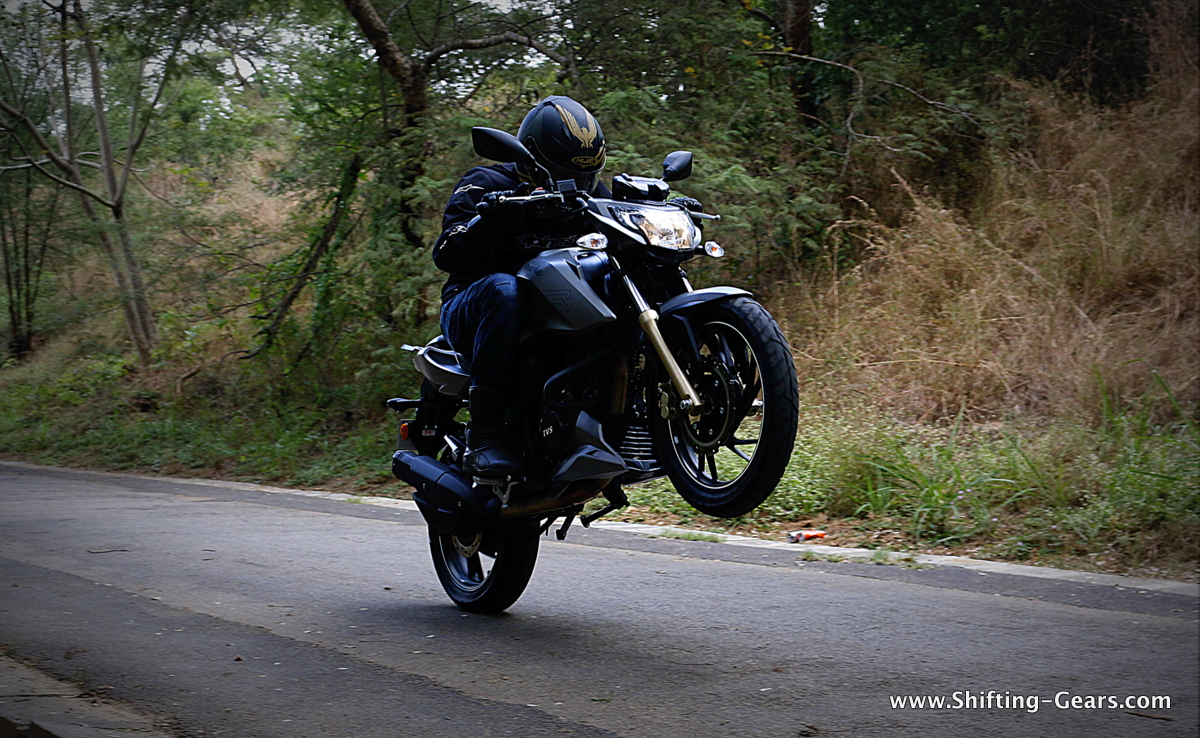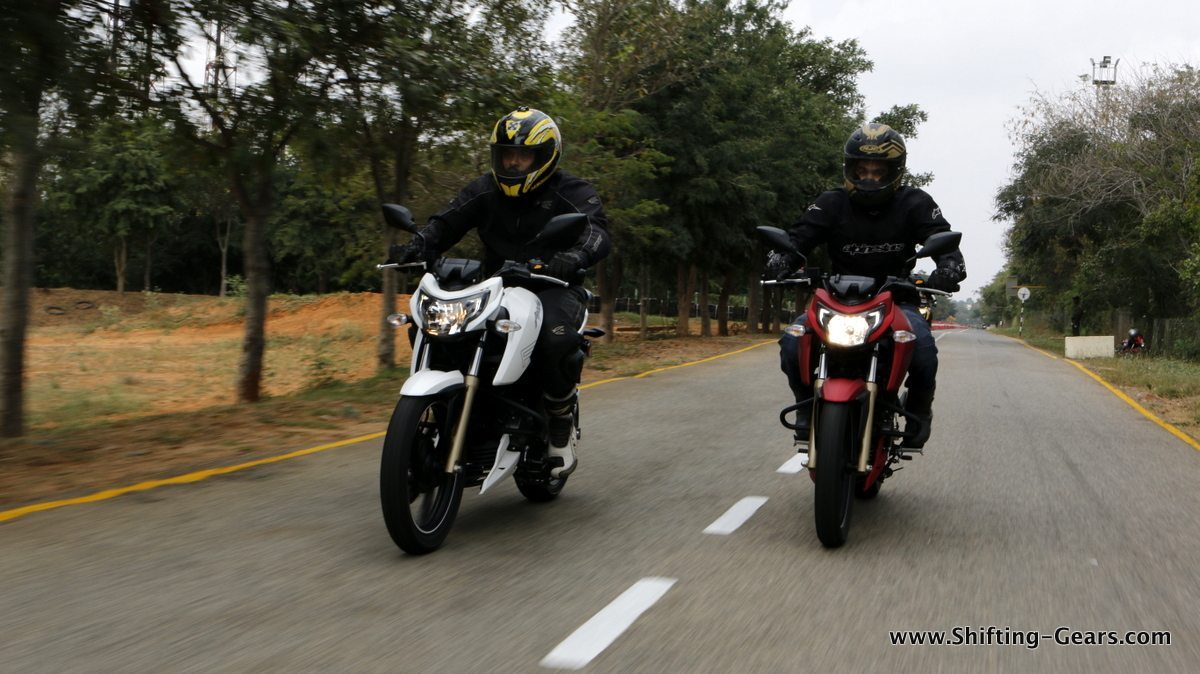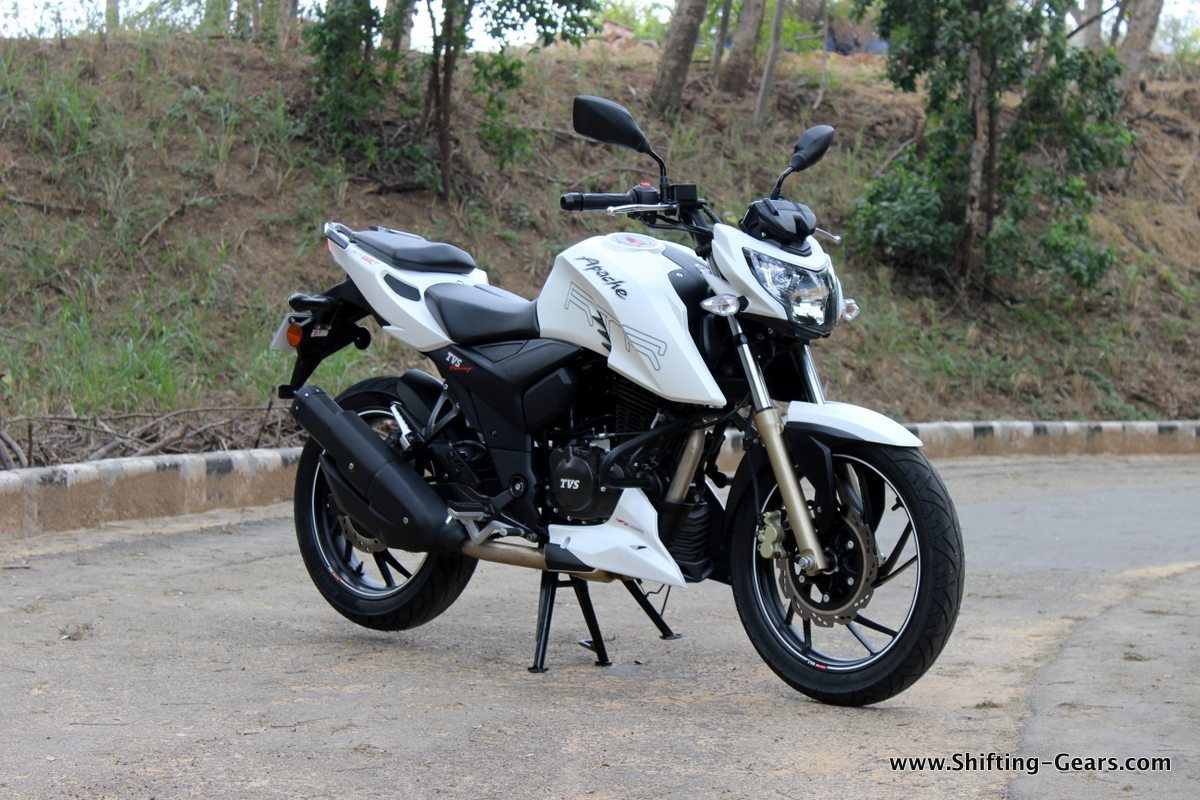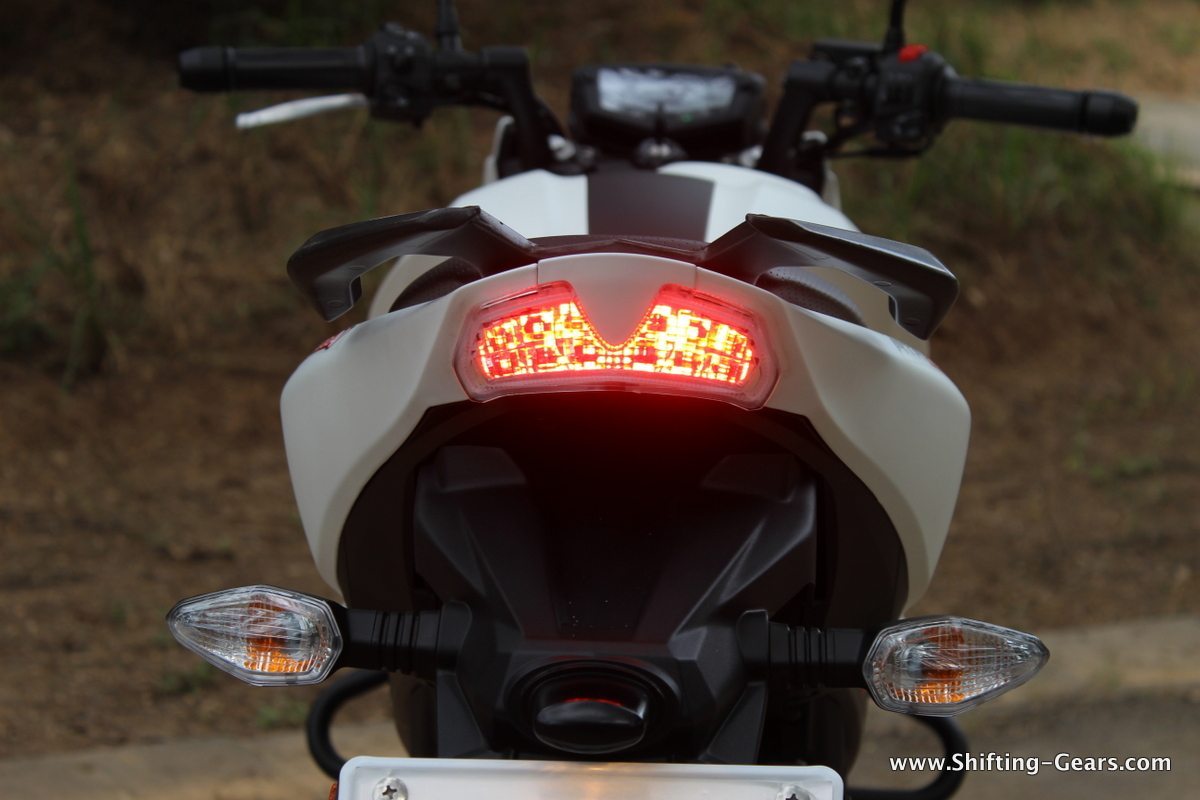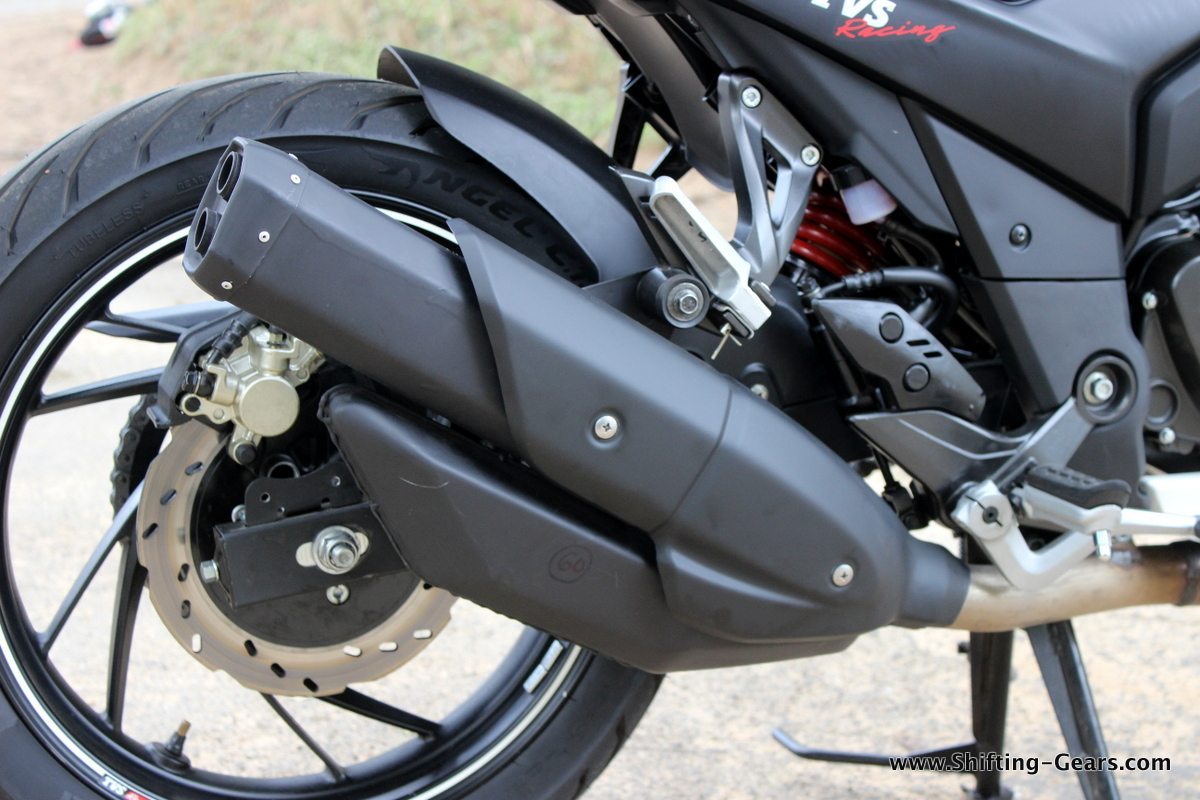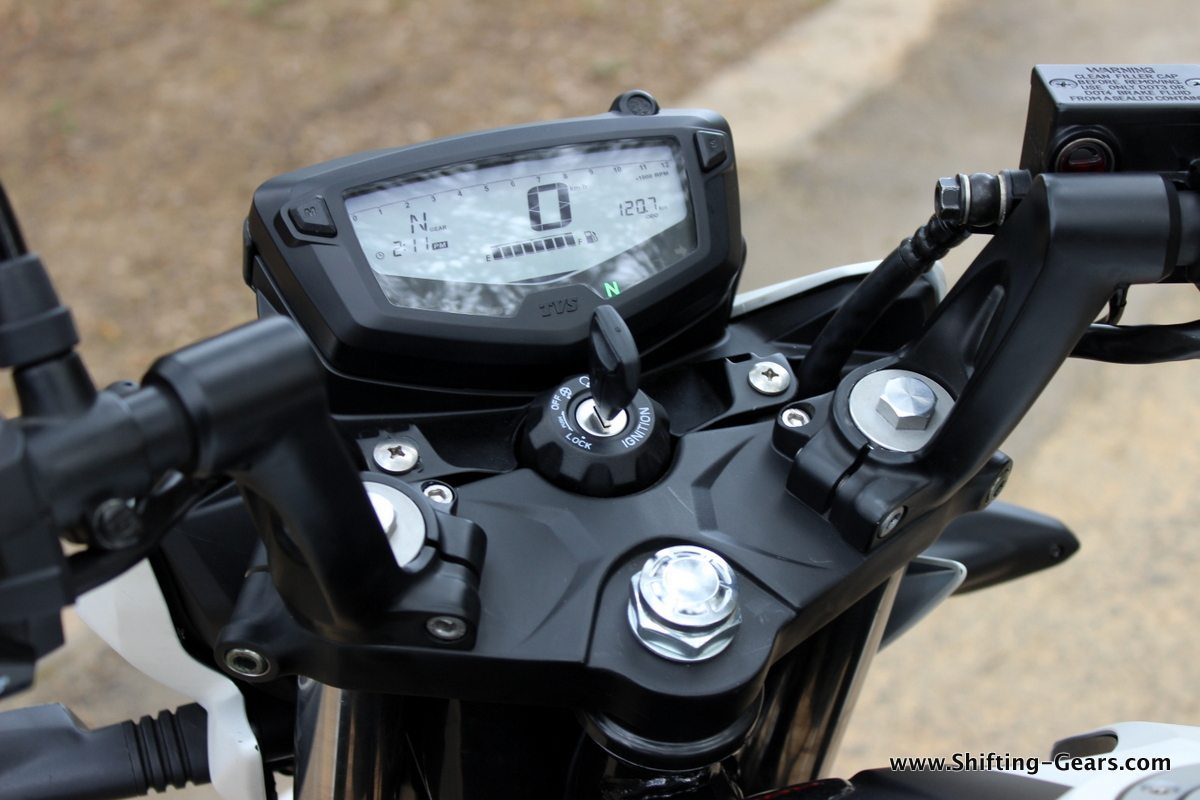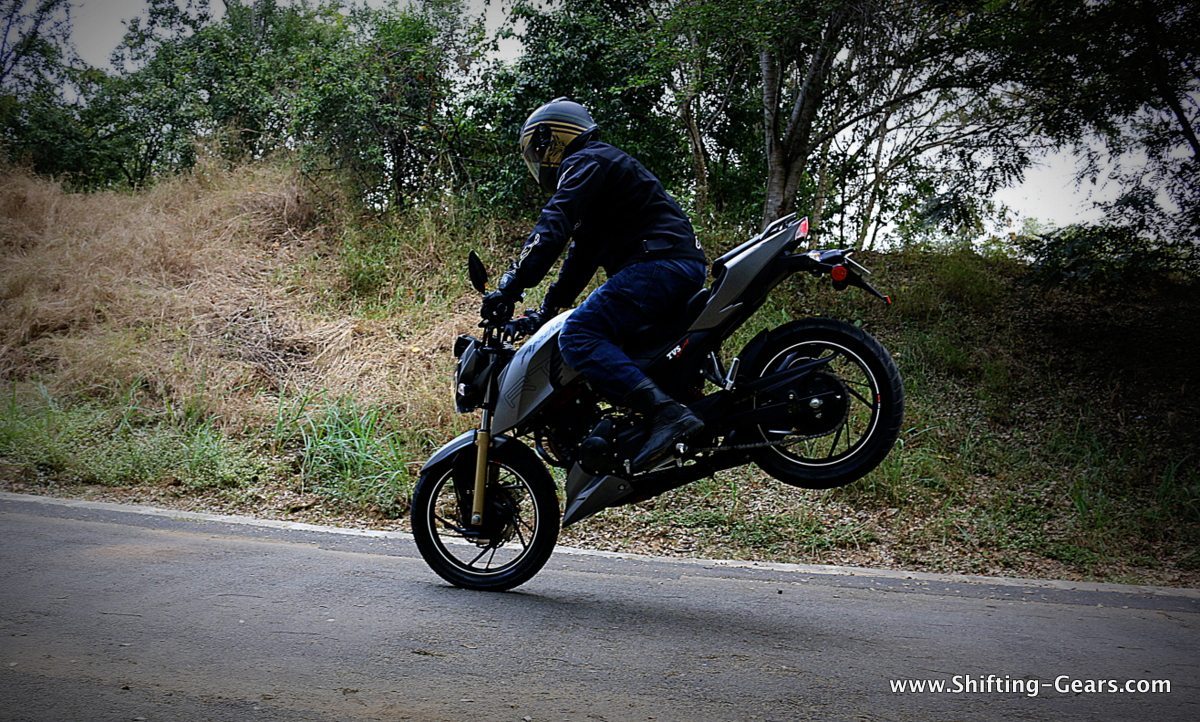Let’s point out some interesting facts first. It was 2005-06 when TVS first launched the Apache brand in India. Since then, the Apache has been the flagship model for the brand. That’s a good long decade for a product life cycle. Also, while the Apache did get feature additions, more power, and other such stuff during these 10 years; nothing changed drastically. TVS lacked behind competition such as Bajaj who kept coming up with new and new technologies on their Pulsar range along with new generation models. TVS, may be due to the lack of technological back up or with slow product development, kept giving bits and pieces to the Apache to survive. Since launch, the Apache evolved from a 150cc to a 180cc in 10 years. Got fuel-injection rather early compared to competition. But was the first bike ever to be launched by an Indian manufacturer to get a dual-channel ABS.
For a very long time, the Bajaj Pulsar had been India’s #1 budget performance motorcycle in India. But things have changed in the recent past. Even before the launch of the all-new Apache RTR 200 4V. In December 2015, the Apache 160 & Apache 180 models have managed to outsell the Bajaj Pulsar models by a good margin. This comes are really encouraging news for a brand who is coming up with a all-new model after a long time. TVS claim that even after their collaboration with BMW Motorrad, the development of the Apache RTR 200 4V has been completely in-house.
We’re sure the name of this new model gives enough cues. RTR stands for TVS’s Racing-Throttle-Response, 200 stands for the engine capacity & 4V denotes 4-valves.
So how good is this Apache RTR 200 4V? Even with slightly poor specs on paper, can it hold up in this competitive market? TVS invited us to their private test track to help finding out an answer…
Styling:
Launched in 2005-06, the TVS Apache has been in the market for a good decade, and with almost no major change. Yes, it got some serious update in the form of ABS being offered as an option, but the styling of the model sold till last year was reminiscent of the 1st generation model. But now, with the Apache RTR 200 4V, TVS has taken a sharp design switch. The bike looks at par with the competition with an edgy design which will attract the youth along with not offending those who don’t like things to be too flashy.
At the front, you have a sharper (compared to the previous model) headlamp which gets a smoked treatment and sports a body colour bikini fairing. The headlamp is the regular halogen type, but the Apache now gets 2 ‘exponential’ shaped LED DRLs on either side. Keeping things rather rough and raw, TVS doesn’t offer a small windscreen to cover the instrument cluster above the headlamp. Turn indicators are conventional bulbs and get clear lens. We would have loved LEDs though. Below, the front fender is body coloured while the telescopic front fork is painted in gold. Black bi-spoke alloy wheels sport a white rim stripe and house the 270mm petal disc brake. Unlike Bajaj’s Pulsar RS200, the Apache RTR 200 4V gets a dual channel ABS system, which means it works on the front and rear tyres.
Come to the side and the sharp & edgy styling is highlighted the most. The fuel tank gets integrated floating cowls pointing towards the front fork and also have an aero duct where they mingle with the main tank. This helps in keeping aero balance and deflecting the wind. You get the familiar Apache sticker on the tank along with a subtle yet larger RTR badge below. The centre portion of the tank gets a black stripe while the fuel filler cap is offset to the RHS. Adds quite some kink to the design. Also, the lift flap for the key over here is painted in red. The tank is nicely chiseled to accommodate your knees when riding hard. The edges show off nicely on the matte paint and we’re glad TVS hasn’t over done things with decals. Below, the all-new engine is painted in all black with a TVS marking on the engine side cover. The underbelly is also painted in body colour while the centre portion (behind the wheel) is thoughtfully painted in black, since it will gather a lot of dust and dirt. Side panel is now different and does’t have the ‘E’ shape like the previous Apache models. This is also seen in a matte black shade and has ‘TVS Racing’ written in a corner, hinting at the brands heritage in motorsports. Seats are of the split and step-up type adding to the sporty appeal.
Come to the rear, and the first thing we would like to talk about is the unique looking exhaust. This is unlike any other end can you would have ever seen on a two-wheeler on sale in India. The cat con is neatly placed in the lower section while the exhaust is released from the longer section on top. Very thoughtful, and a bold design move. Next up is the LED tail lamp which is nothing great, functional – that’s it. Rear panel below the pillion seat is body coloured and gets the model badging ‘RTR 200 4V’. There’s again a unique reverse placed pillion grab rail in a dark shade. Rear wheel houses a 240mm petal disc brake and has a small tyre hugger to avoid dust being thrown on the rear monoshock.
Overall, we would give the styling a 9/10. Although late to the party, the TVS Apache does look like a 2016 motorcycle and should surely attract buyers.
Instrumentation & ergonomics:
The speedo console on the TVS Apache series was always the most loaded one, till of course KTM stole the show. This time, the Apache RTR 200 4V gets an all-digital instrument console, which is also a first for TVS. Backlit in white, it is very easy to read in broad daylight as well. There’s a lot of information on display which includes a speedometer, tachometer, fuel gauge, mode indicator, gear indicator, trip meter, clock, lap time recorder, top speed recorder, shift indicator, and a couple of tell tale lights. Switch gear is the usual stuff, nothing new. Plastic quality is very good, and the touch and feel around the rider console does feel like it will age well. Rear view mirrors offer decent viewing range.
The Apache RTR 200 4V gets clip-on handlebars which are raised from the mounts a fair amount. Painted in black, they look good and mingle well with the plastics around. The handlebar position is neat and gives you a balanced position. The foot pegs are rear set offering a sporty seating position. Although you are a bit front biased (if short in height), the riding position is rather comfortable to go the distance. It’s a little better (easier) than the KTM Duke 200 we thought. Seat compound is surely better than the KTM, and will not leave your saddle sore even after the shortest of rides. Everything falls right in place, the clutch, the brake levers, the gear shifter and switch gear. Saddle height of 800mm is not too low anymore. And unlike the previous Apache models, it doesn’t feel too small. Of course, if you’re taller than 5’10”, then things are less ideal.
For the pillion position, we can’t talk much as we sat here just for a short spin. Seating position is acceptable by segment standard. At 5’8” tall, I did not have any problem swinging my leg to get here and my feet were comfortable too when in position.
Engine, performance & handling:
This is the biggest and most powerful Apache built by TVS. Powering this model is a 197.75cc, SI, 4-stroke, single-cylinder, oil-cooled with ram air assist, petrol motor. TVS is selling the bike in a carburetor as well as EFI variant. The carburetor (developed by Keihin) RTR 200 4V produces 20.05 PS of power @ 8,500 RPM. The EFI (developed by Bosch) variant produces 21.0 PS of power @ 8,500 RPM. Both the versions produce the same 18.1 Nm of torque @ 7,000 RPM. Now this engine is not all-new, but is a rebored version of the existing RTR 180. Disappointing! After running so late to introduce an update, TVS could have had something better up their sleeve, at least liquid-cooling or a 6-speed gearbox, or more power & torque. Well, on paper, the numbers do look inferior to the competition, but TVS claims that this will satisfy the Indian customer needs as 80% of the power and torque delivery will be delivered in real world city riding and not just on the open highways when you get to revv hard.
With a kerb weight of 148 Kg (148.5 for the EFI), the Apache RTR 200 4V is heavier than the Pulsar 200NS & Duke 200. This results in a slower 0-60 kmph timing of 3.9 seconds and 0-100 kmph timing of 12 seconds. While power to weight ratio used to be the talking point of the previous generation Apache models, this time, with more weight and lesser power, it is not the best point to bring up.
But that’s what the paper says. Swing a leg, turn on this latest Apache, and you’ll be a happy man. Initial acceleration is good and the gearbox worked well during our short stint with the bike. You’ll find the throttle response of the EFI noticeably crisper compared to the carburetor version. Adding a counter-balancer shaft, TVS has managed to address the vibration issue very well. The motor now runs smoother than the previous models, and the vibration on the handlebar, tank, foot pegs, etc. is drastically reduced. On high revvs though, the vibration does creep up.
We couldn’t test the city performance as the bike was handed to us inside the TVS test facility at a small track. So we could only do multiple sprints in a straight line and some curves, without encountering any traffic situation. With a claimed top speed of 129 kmph, we did manage to hit 126 kmph in this small stretch, so we’re happy. The new Apache has very good initial & mid-range punch, but the motor still isn’t delivering that extra fun on high RPMs. Beyond 8,000 RPM, the progress starts to taper. The engine however does redline all the way at 11,000 RPM. The shift indicator does hint at this nature by blinking at 7,000 RPM, where the peak torque is delivered. We tried multiple times to hit triple digit speeds and revv the motor to the nuts, and were happy that the engine did not feel too strained doing so. Hitting the top speed isn’t tough, but you have to be patient beyond 110 kmph, unlike the KTM where you simply blast it to the revv limiter. Both variants are similar in performance, it’s just the throttle response which makes the difference.
Exhaust note is nice and throaty, but felt slightly lesser than the older RTR 180. TVS claims that they have to meet the stricter emission and sound norms globally, since this bike will be exported as well. Not a complaint, but we would have loved to hear that exhaust while revving hard.
Handling remains to be the highlight of the Apache even on the RTR 200 4V. It’s nimble, easy to flick around corners and is backed by two types of tyre compounds. While those who have some extra money can opt for stickier Pirelli tyres which are without any doubt the best rubber compounds for the streets; we were really surprised by the new TVS Remora tyres which are offered as standard. These tyres almost matched the Pirelli units in offering grip around the corners. This is a big step up considering that tyres were one of the major flaws of the older Apache models. The bike rides on a double-cradle chassis, which is inferior to the Perimeter frame of the Bajaj or Trellis by KTM. It’s still not too bad and offers the right balance in ride quality. TVS finally brings a rear monoshock sourced from KYB. This further enhances the stability of the motorcycle. There are settings too to suit your riding style. It’s still not really a corner carver, but better than before.
Braking performance is really good, and specially due to the grippy tyres. We only got the non-ABS model to test, so we’re sure that the one equipped with ABS will have even better braking performance. All variants come equipped with petal disc brakes at the front and back. TVS maintains a step ahead in safety by offering dual-channel ABS as an option along with RLP (Rear Lift Protection). This will ensure that both wheels stay in contact with the tarmac even under hard braking.
Overall, we think that TVS has surely upped their game. The brand claims that this is still a 100% TVS product with no inputs from BMW Motorrad. Although inferior in outright specs, we were pretty satisfied on the motorcycle comparing it to the older generations. At a starting price of Rs. 88,000, the Apache RTR 200 4V offers good value for money. TVS is known for its reliability and durable parts when compared to competition. Of course, it comes at a cost though. With an option of tyres, fuel system and ABS; there are total of 8 variants which are available costing over Rs. 1.15 lakh (Ex-showroom). So there’s something for everyone.
While the Bajaj Pulsar 200NS is off the market, we think TVS has missed the opportunity by delaying the market debut of the Apache RTR 200 4V.
Quick comparo of the Apache, Pulsar & Duke.
Click here to check out the photo gallery of the TVS Apache RTR 200 4V.

